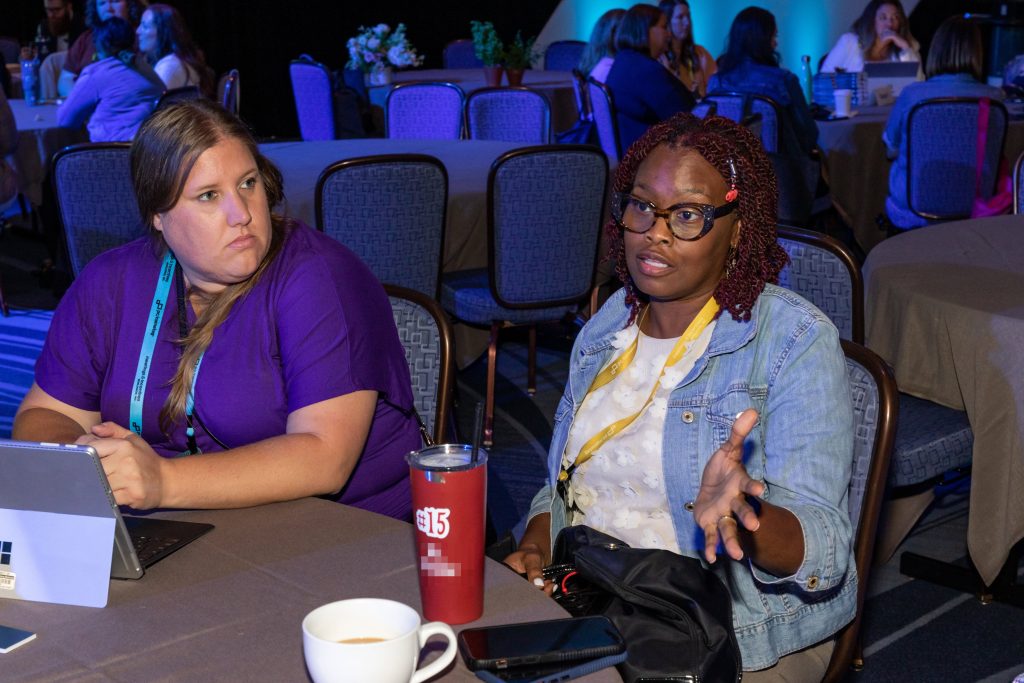How to Make Events More Interactive
No matter the type of meeting, event, or incentive program, more attendee interaction leads to greater overall attendee engagement. Whether they’re connecting with each other, the presenters, or the content, their interaction proves the event’s value, with a greater return on investment for you and a return on attendance for them.
However, fostering attendee interaction can be easier said than done. Frequent event attendees feel like they’ve seen it all, while first-timers may be overwhelmed or unsure who to talk to. In this blog post, we explore four ways to make your events more interactive.
1. Revamp Your Networking Opportunities
One of the most common ways to encourage attendee interaction is through networking sessions or receptions. Extroverts may be ready to jump right into networking, but introverts may need a nudge to take full advantage of the opportunity. There are multiple ways to easily guide the direction of socialization and connection.
Use the Room
Designate specific areas of the room for certain topics. For example, direct attendees to the front of the room if they’re most interested in talking about Topic A, the middle of the room for Topic B, and the back of the room for Topic C.
Color-Coded Networking
Have you seen the viral color-coded networking coffee cups? You can apply a similar idea to other aspects of your event. Use different colored lanyards or name badges to help differentiate attendees. During registration, you can ask them to select a topic of interest, or you can differentiate by their industry or role.
Speed Networking
Try speed networking! This ensures attendees meet multiple people instead of only talking to one small group. It also heightens the pace of your event and maintains consistent participant involvement.
2. Rethink Your General Sessions
Some practices to increase session interactivity have become an industry standard, such as Q&As or polls. While you don’t need to ditch these tried-and-true methods, think outside the box to see attendee engagement soar.
Choose Your Own Adventure
For smaller or more informal meetings, introduce the “choose your own adventure” approach. Instead of following a set agenda, provide a list of session titles and allow attendees to vote on the next presentation. Be sure to allow enough time for all presentations regardless of order, and confirm that speakers are on board with this approach.
Bouquet Station
If you’re planning a welcome reception, create a make-your-own bouquet station. This provides hands-on engagement for attendees that is also sustainable. Bouquets can be reused as décor for other event sessions, or attendees can bring them back to their hotel rooms or homes. After the event you can donate them to a local nursing home or hospital to incorporate a giveback element.
Small Group Discussions
Build time into your agenda for small group discussions between sessions. Provide a list of questions or prompts to start the discussions, and invite the presenter to travel around the room to join in or answer questions. (You can also include an interactive Meet the Speakers session to encourage engagement between attendees and presenters!) Small group discussions are best achieved with attendees seated at tables, which leads to the next point.


3. Design for Interaction and Engagement
Event design and room layout have a profound impact on attendee engagement and interaction. For example, banquet or crescent round style seating allows attendees to easily talk to more people than classroom or auditorium style seating. If your entrance is at the back of the room farthest from the stage, flip your layout. Bring the stage near the entrance so the first seats available are closest to the stage instead of farthest.
Cater to the comfort levels of all attendees by introducing quiet seating or quiet tables. Designate this area for attendees who prefer not to talk during presentations and to silently absorb their learnings between sessions. In the other areas, perhaps called the sharing seating or sharing tables, attendees are welcome to (quietly) discuss the material with their neighbors during and between sessions.
4. Introduce In-Person Gamification
Gamification is often introduced through an event app, but this doesn’t always promote face-to-face connection. In-person gamification solves this problem by requiring attendees to interact with each other. Turning the games into a competition between teams instead of individuals also increases interaction. Teams can be made up of those sitting at the same table, or they can be assigned using colored lanyards or name badges.
Trivia around event topics is a popular inclusion, and if your event has a tradeshow, incorporate a scavenger hunt requiring attendees to visit every booth—and actually talk to the booth staff—to find what they need to win.
If you’re missing the technology aspect of an app, there are ways to merge in-person gamification with event technology. One example is a digital bags game, which was featured at the 2023 M&IW Summit, and you can always share a leaderboard on the mobile app.


Next Steps
Make sure your next event is one to remember! M&IW’s event management team knows how to engage attendees for any type of meeting, event, or incentive program. Contact us to learn more or get started.
Already an M&IW customer? Contact your Customer Success Manager.


